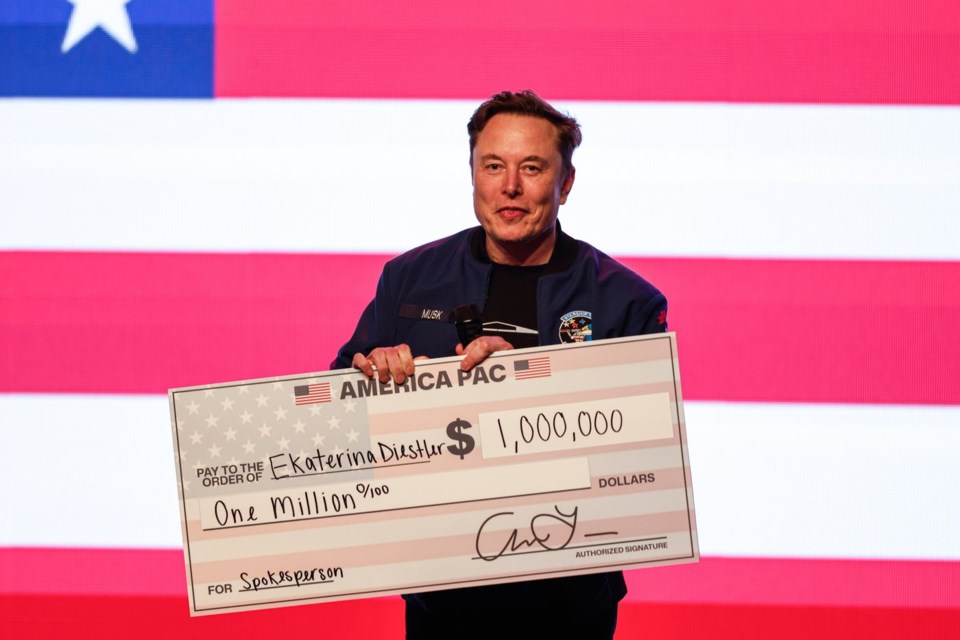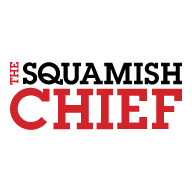TOPEKA, Kan. (AP) — The race for control of the drew $100 million in campaign spending, attack ads and the attention of President Donald Trump and close ally .
While its spending for a U.S. judicial contest, the race that ended Tuesday was the apex of a trend building for years as state Supreme Court races have gotten increasingly costly and vitriolic. The partisan tone of and the amount of money it drew from outside interest groups raise questions about whether elections are the best way to fill seats for bodies that are supposed to be nonpartisan and ultimately decide the fate of state laws and citizen ballot initiatives.
The politicized nature of the contests was illustrated starkly on Friday when a Republican-majority appellate panel in North Carolina sided with a Republican state Supreme Court challenger who is seeking to from last November's election.
These races have become priorities for both major parties because state high courts have been playing pivotal roles in deciding rules around redistricting, abortion and voting rights while also settling disputes over election outcomes.
Some states shifted toward electing justices “to bring the process out into the sunlight, to disempower powerful political actors from getting themselves or allies on the bench, or to provide some level of public accountability,” said Douglas Keith, senior counsel for the Brennan Center’s judiciary program. “But with these modern judicial elections, these highly politicized races are not really serving any of those goals."
Not every state puts its Supreme Court seats up for a statewide vote. Some use appointment processes that allow candidates to avoid public campaigning and the influence of political donors. Keith said a merit-based selection process can result in Supreme Courts “that are not as predictable along political lines.”
Seven states use partisan elections to select their Supreme Court justices while 14, including Wisconsin, use nonpartisan elections. Meanwhile, nine task governors with appointing justices, two use legislative appointments, four have hybrid models and 14 use a merit selection process that often involves nonpartisan nominating commissions.
Kansas is one of the states with an appointment process, a system that has been in place for six decades and has been largely nonpartisan. Bristling at some of the court's rulings in recent years, now want to change that and move toward a system in which justices have to stand for election.
Opponents say Republicans' goal is clear in a GOP-leaning state: remaking the court in a more conservative image.
When a vacancy on the seven-member court now occurs, applicants for the seat are screened by a nine-member commission. Five are lawyers elected by other lawyers and four are nonlawyers appointed by the governor. The commission names three finalists and the governor — currently a Democrat — chooses one.
The Republican-supermajority Legislature placed to the Kansas Constitution on the ballot for the state’s August 2026 primary election, rejecting arguments that the current system of filling vacancies on the state Supreme Court is notable for its lack of partisan politics and promotes judicial independence.
Backers of the proposal have criticized the state’s top court for years over rulings and forcing higher spending They argue that the court is too liberal and is out of step with voters, even though Kansas voters opted to , just months after the U.S. Supreme Court .
Republicans also say that in making Supreme Court candidates run for election, any politics in the process would be visible instead of “a black box.”
“It is an elitist system, and that elitist system was designed by lawyers,” Kansas' attorney general, Republican Kris Kobach, said of the current system. “It is obviously controlled by lawyers.”
Critics of the Kansas proposal and the tens of millions of dollars spent on in recent years. They say that's just what Kansas should expect to see if voters approve the change next year.
With the current system, they say a candidate’s experience and likely judicial temperament are the most important factors, rather than a candidate’s skills at campaigning, raising money or creating television ads.
“There is a reason that goes beyond giving the people a voice. There’s a political reason to change the court,” Bob Beatty, a political science professor at Washburn University in Topeka, said of Republicans' proposal.
Kansas Senate President Ty Masterson, a Wichita-area Republican, said he wasn't concerned about Wisconsin-style campaigning for high court seats if the amendment passes. He said opponents were “trying to take a one-off and make it something it’s not.”
In Oklahoma, the Republican-led Legislature for several years has considered legislation seeking to change its current appointment system for appellate court justices to having them run for election. Some Republicans have brought up the issue in Alaska in recent years, though the efforts have not advanced.
In North Carolina and Ohio, Republican-dominated legislatures in recent years have added party labels to the ballot in what many legal experts say is an attempt to benefit conservative judicial candidates and construct a court that aligned more with the legislature’s policy goals.
North Carolina has been caught up in over a close, highly politicized . The Republican candidate, Jefferson Griffin, has challenged more than 65,000 ballots cast in last fall's election. On Friday, the Republican majority on a North Carolina appellate panel sided with Griffin, who was 734 votes behind Associate Justice Allison Riggs, a Democrat who is likely to appeal.
Pennsylvania is bracing for a Wisconsin-style election in the fall. It's another presidential battleground where the state Supreme Court could be called upon to decide election disputes during next year's midterms or the 2028 presidential election. Three Democratic justices are running to retain their seats and face for additional 10-year terms.
The recently concluded Wisconsin election offers warning signs of what may come in November in Pennsylvania when Democrats’ 5-2 majority on the court will be on the line, said Christopher Borick, director of the Muhlenberg College Institute of Public Opinion in Allentown.
Spending exceeded $22 million in Pennsylvania’s .
“It would be silly not to anticipate that in this current environment in a key state like Pennsylvania," Borick said. "It is going to be intensified.”
Making term limits longer and eliminating judicial reelections could be a useful reform because “a lot of the influence of money comes from the pressure to get reelected,” said Michael Kang, a Northwestern School of Law professor and author of “Free to Judge: The Power of Campaign Money in Judicial Elections.”
“There is no perfect system,” Kang said. “But there are things that can be done to improve.”
___
Associated Press writers Marc Levy in Harrisburg, Pennsylvania, and Sean Murphy in Oklahoma City contributed to this report.
___
The Associated Press receives support from several private foundations to enhance its explanatory coverage of elections and democracy. See more about the AP’s democracy initiative . The AP is solely responsible for all content.
Christine Fernando And John Hanna, The Associated Press




